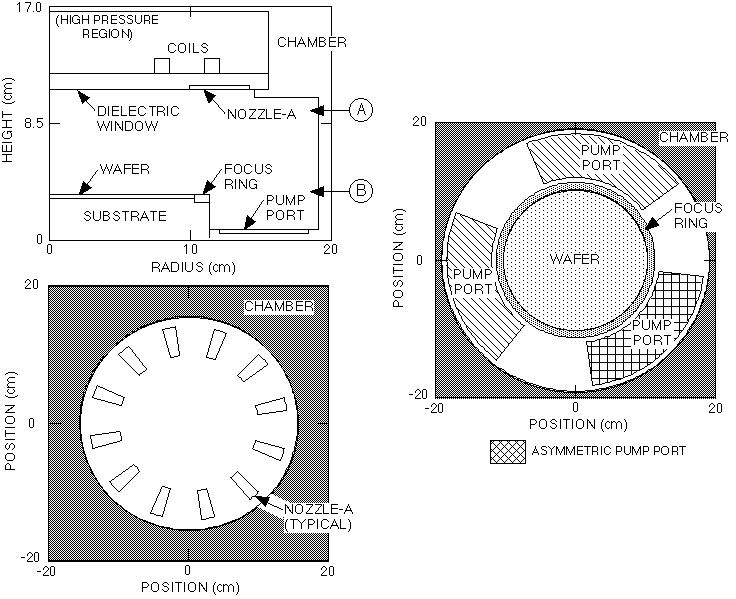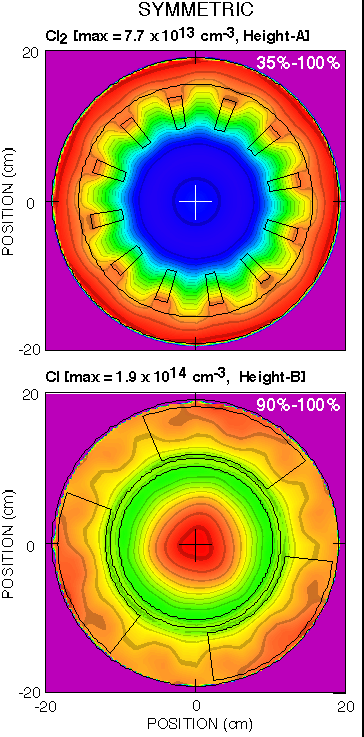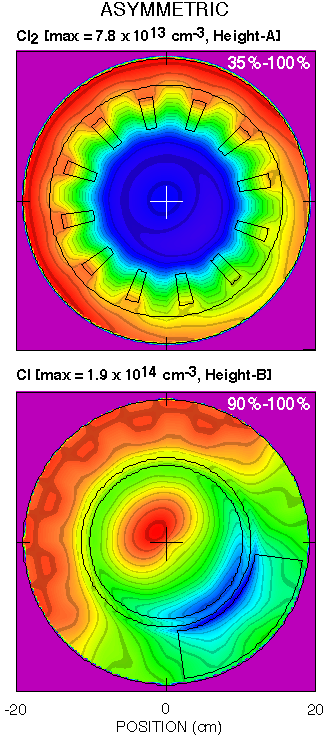

Asymmetric Gas Pumping in Plasma Etching Reactors:
Investigation using a 3-D Plasma Equipment Model
Mark J. Kushner
Department of Electrical &
Computer Engineering
University of Illinois at Urbana-Champaign
1406 W. Green St., Urbana, IL 61801
Inductively Coupled Plasma (ICP) etching reactors are typically operated at pressures of < 10s mTorr. At these low pressures, it is generally assumed that gas transport is dominated by diffusion and so the details of gas pumping are not as important as in higher pressure RIE reactors. In this study, we have applied the 3-dimensional Hybrid Plasma Equipment Model (HPEM-3D) to the analysis of ICP reactors which use side pumping.
ICP reactors operating in 5-20 mTorr Cl2 and with 400 W of power deposition were investigated with a variety of inlet and outlet configurations. An article summarizing the results of that investigation can be obtained from M. J. Kushner, "Consequences of Asymmetric Pumping in Low Pressure Plasma Processing Reactors: A 3-dimensional Modeling Study", J. Appl. Phys. 82, 5312 (1997). A sample of results from that study follow. Cl2 is injected through a symmetric array of nozzles from the top insulator. The gas is pumped either symmetrically through 3 evenly spaced pump ports or through a single pump port, as shown in the figure below.


Last updated: 1 February 1998.